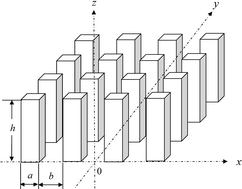Hierarchical structures for natural superhydrophobic surfaces
Abstract
Superhydrophobicity of natural surfaces has recently been studied intensively with the aim of designing artificial surfaces. However, the role of hierarchical structures in such surfaces has not been completely understood. Based on thermodynamic free energy analysis, we reveal that the harmonious combination of hydrophobic materials and adequately rough geometry of these natural surfaces can lead to stable composite states. Furthermore, based on a set of criteria, we find that the dual scales of the hierarchical structure for surface geometry can guarantee not only wetting but also suitable mechanical characteristics. This study provides a mechanistic/thermodynamic explanation of how nature has developed a mechanically durable superhydrophobic surface, which can be an inspiration for the fabrication of artificial surfaces.


 Please wait while we load your content...
Please wait while we load your content...